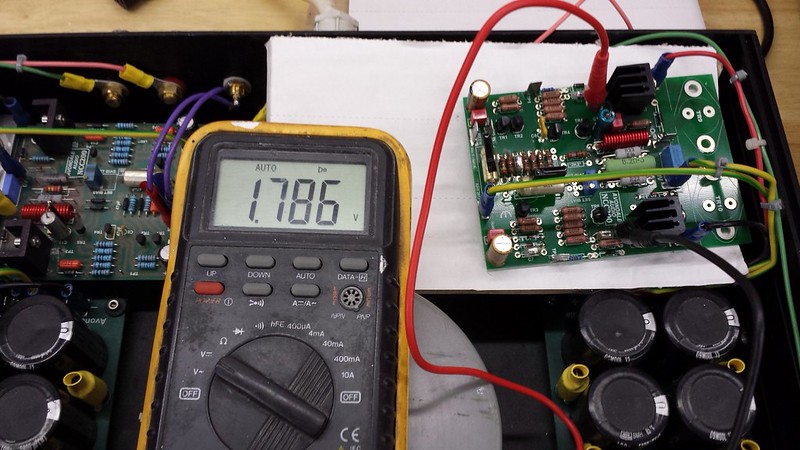Been trying to understand what all the extra bits in the NAP/NCC actually do...
Disclaimer: No criticism of the design is intended, nor any implications on sound quality.
I am running the amp on the bench with 35V regulated supplies, no local decoupling, the RC in each front end supply shorted and no input filter. References are made to this circuit:
http://www.acoustica.org.uk/t/naim/poweramp_pix/NAP250 schematic.jpg
Which is representative of what I am running (of course with no SOA protection).
1) TR2 collector resistor, 22K:
This has no effect on the DC offset as I thought it might. It does however slow the amp down just a bit. This seems illogical given the dominant pole type compensation the amp uses. So it's part of the compensation network (as other have said).
2) The 470pF caps in series with the base of the drivers:
According to the RCA notes these are to improve the transient response, and indeed the one on TR10 base does. The one on TR9 base seems to do nowt.
However replacing the 2 resistors and 470pF combo with a 10R resistor (like most amps do) results in a better improvement. Apparently the 680R and 560R are there to limit current in case of overload, but I'm not convinced they are needed.
3) The 1K and 220pF on the base of TR6:
No testing done on this, but it would appear to be there to 'enhance' the Early effect in TR6, thereby increasing the VAS current at high +ive swings. The 200pF limits this extra current to audio frequencies.
As a general comment the weakness of the amp seems to be the Q-comp output stage. This is sluggish at turn on and the class B drivers don't help (as PD said). The way to side-step this is to bias the amp a bit more than normal - 60mA seems to do the trick. Alternatively shorting all the resistors mentioned in #1 and 2 achieves better results with more normal bias values - ~30mA.
To be honest, some extra bias might help this amp which has rather poor thermal feedback for Iq.
Transient response into a capacitive load is not great and once again highlights the sluggish TR10/12 effect. It is massively improved by using the 0.22 Ohm output resistor like Naim do - this get's rid of the sharp edges in the waveform resulting from Tr12 not being able to turn on quickly enough.
Adding the input filter masks most of the effects mentioned above.
Loop stability looks fine with a wide variety of awkward loads using either the NCC output inductor or the Naim 0.22R. I don't know why Naims are supposed to be on the edge of stability (caveat the lack of LTP emitter resistors will affect the loop stability a bit in the NAP).
Conclusion:
Decent but not spectacular technical performance if built as standard. 0.22R output resistor version is better behaved into reactive loads.
Next steps:
Lash it up with a generic PS, give it a soak test then have a listen. Which, of course, is the only bit that matters!




